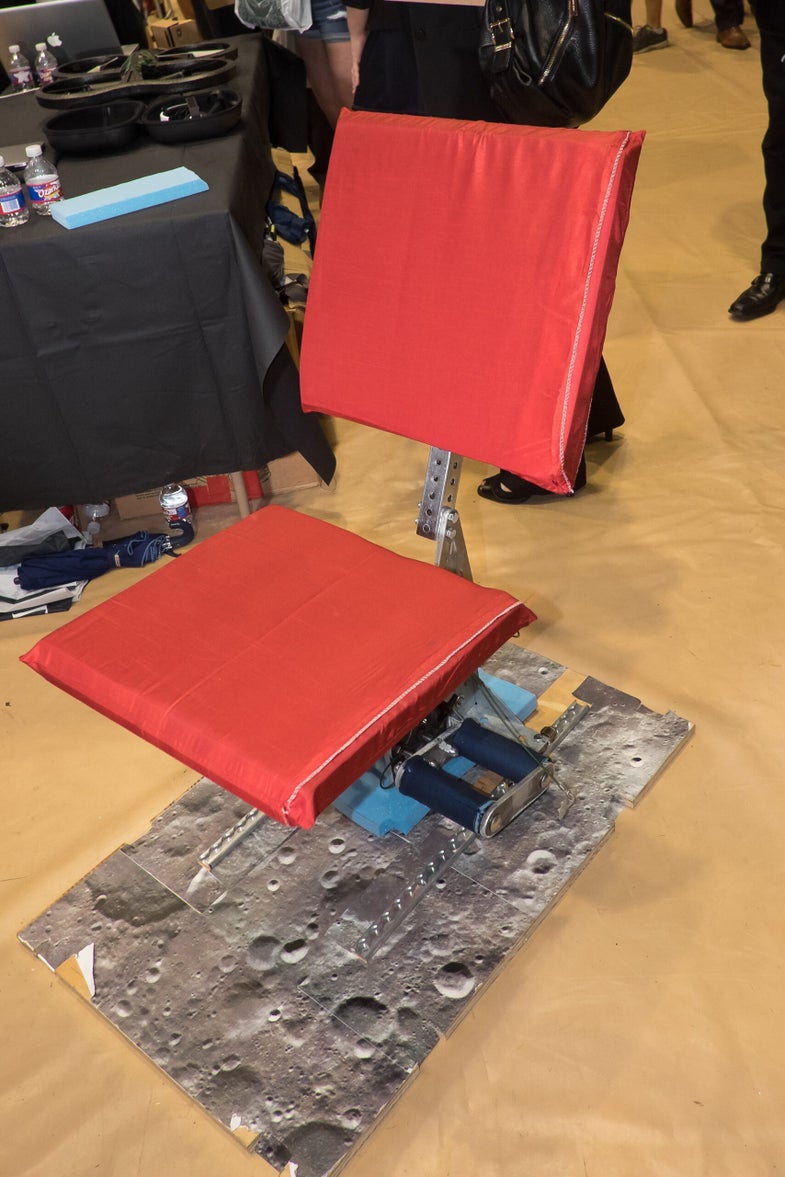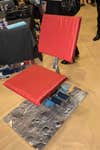Students Design Furniture For Future Space Habitats
Laying it all out on the table


Furniture Of The Future
As NASA moves forward with its highly anticipated mission to Mars, the space agency is thinking about every single aspect of the journey to the red planet–as well as life on its surface. That includes the various furniture the astronauts will be lounging in during their stay. Unfortunately, NASA can’t just make a few trips to Ikea and stock up on particle board and thousands of wooden connector pegs. Any sofas and tables for a Mars habitat will have to contend with a very long shipping and handling process, as well as life on a world with one-third of Earth’s gravity.
So how exactly will astronauts take a load off on the red planet? A student team at Rice University is helping NASA to figure that out. At the behest of the space agency, five Rice seniors in mechanical engineering developed prototype furniture that could someday be used in space habitats on another planet. Given the weight restrictions and limited space on any future interplanetary vehicles, the designs had to be lightweight and flexible, serving multiple purposes in a low-gravity environment.
The team’s answer to this otherworldly request was a seemingly simple chair and desk combo. Yet these two furniture elements, together dubbed the Lunar Lounger, incorporate a highly researched and complex design. According to Laura Blumenschein, the idea to develop a workstation came from interviews with astronauts who have lived and worked on the International Space Station.
“We asked them about their daily tasks, and a lot of their workflow was dominated by writing in their space logbooks,” Blumenschein, a member of the design team, tells Popular Science.

Lunar Lounger
They also consulted with NASA representatives about what a work schedule on Mars might be like. “They’re working from the moment they wake up to the moment they go to bed,” added Alex Schmidt, also on the design team. “That’s why for our design, we heavily lean towards a work desk versus leisure activities.”
For their chair, the base is made with high-grade aluminum, allowing it to be both sturdy and lightweight. High-strength foam is used to cushion the seat and back, which can be adjusted along a rotating axis so that astronauts may recline, sit straight up, or kneel while working. The chair connects to a track running along the floor, anchoring the recliner in place while allowing it to move forward and back.
Both the chair and table can fold flat, making them easily transportable on any future spacecraft. The desk is also adjustable in terms of height, allowing astronauts to either sit and kneel or stand for long periods of time. According to Schmidt, this flexibility in positioning is important to help counteract the limited gravity on Mars.
“The kneeling chair, where you’re seated on a pad and it props you up at an angle, puts you in neutral body position,” says Schmidt. In partial gravity, an individual doesn’t feel as much fatigue standing up or kneeling for long hours, which is why the Lunar Lounger allows for these positions. “If you’re in a habitat on Mars for six months, you want to feel like you’re used to on Earth.”